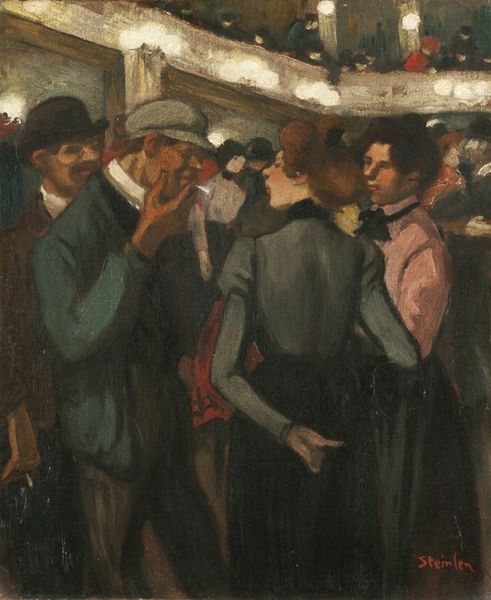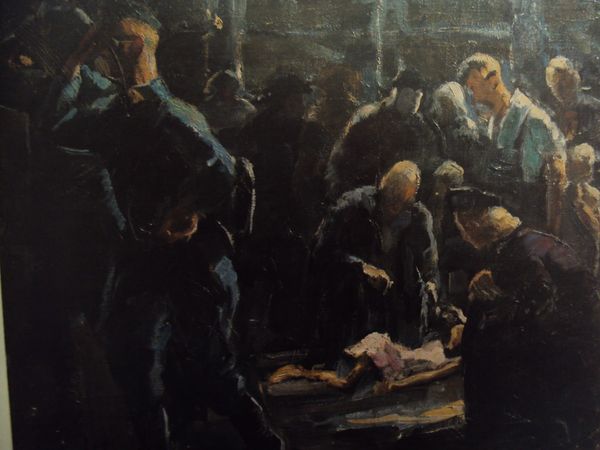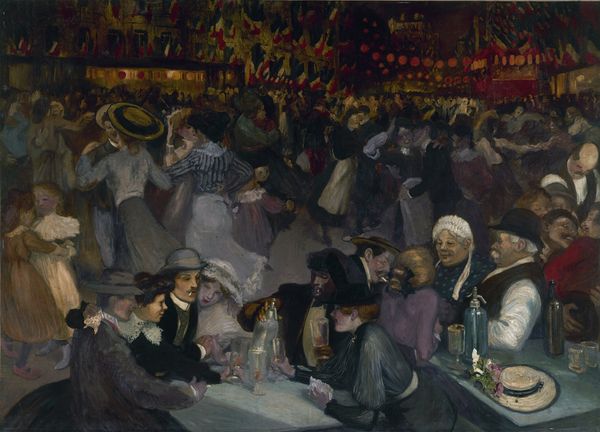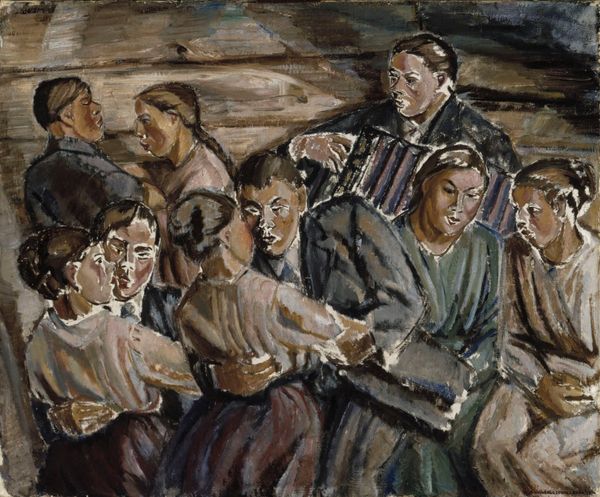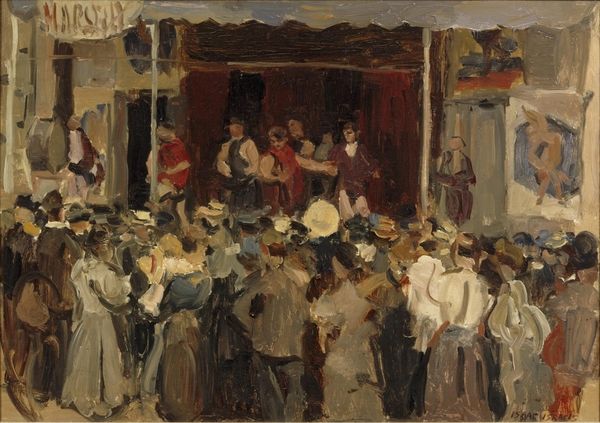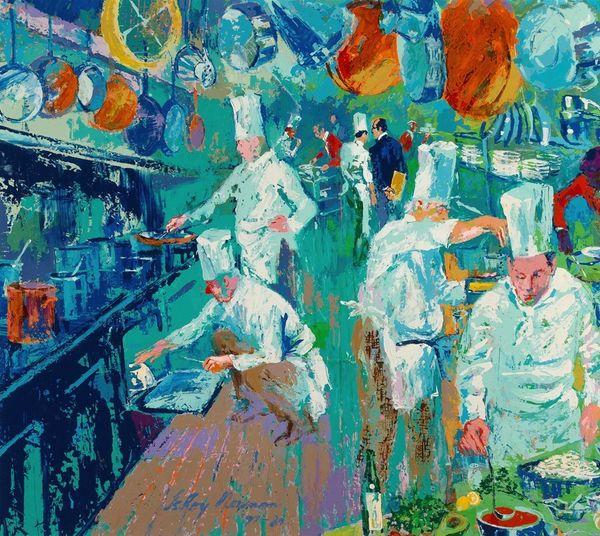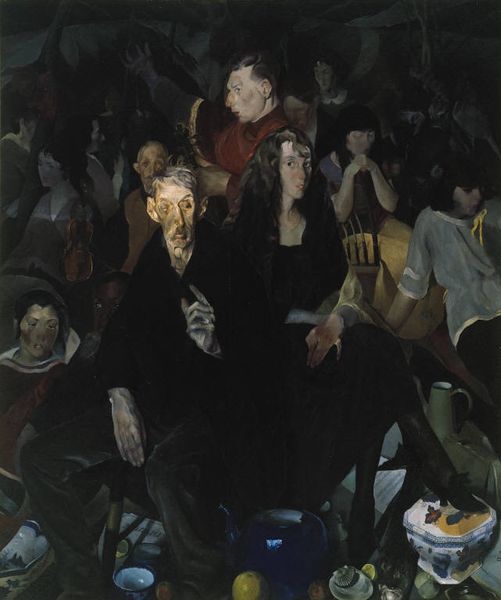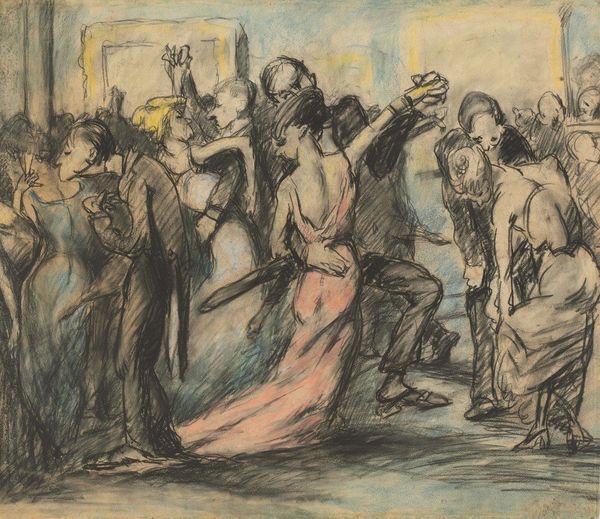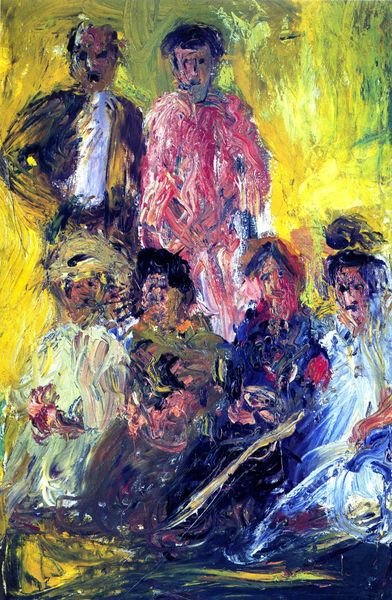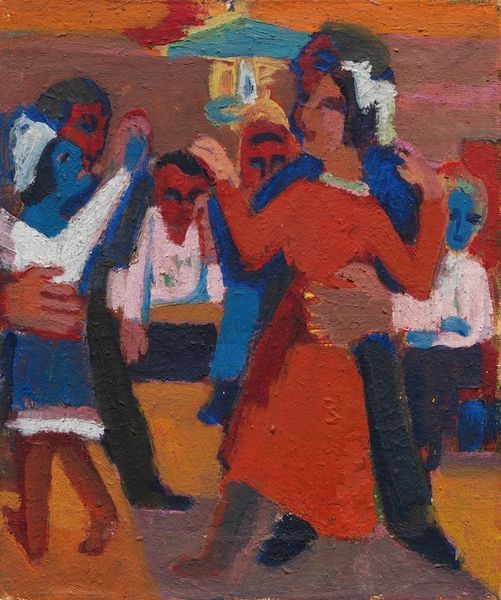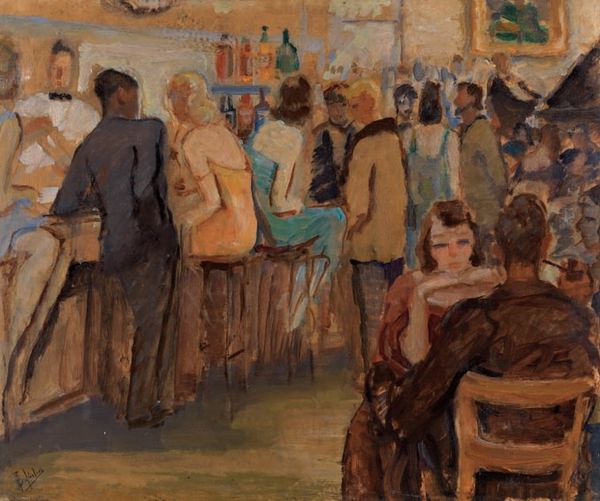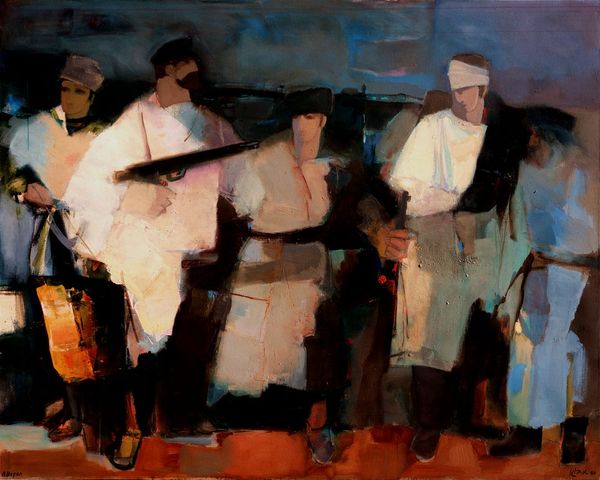
Dimensions: 108 x 81 cm
Copyright: Public domain
Editor: Here we have Anders Zorn’s "Dance in Gopsmor," painted in 1906. It's an oil painting that feels incredibly alive. There's so much movement! It's like you can hear the music and feel the energy of the dance. What strikes you about this piece? Curator: You know, what grabs me first is the light. How Zorn manages to capture that golden, almost hazy light filtering through the scene – it's intoxicating. It gives this everyday scene a kind of dreamy, celebratory feeling. Doesn't it make you want to grab a partner and twirl around? Editor: Absolutely! It does make you want to move! The brushwork is so loose and impressionistic; it almost dissolves the forms into pure energy. Was Zorn particularly interested in capturing fleeting moments like this? Curator: Definitely. Zorn was obsessed with capturing the fleeting, shimmering effects of light and movement. He wasn't interested in meticulous detail; he was after the overall impression, the feeling of the moment. This wasn't just a record of a dance; it’s the *experience* of a dance. Notice how he contrasts the dark shadows with the bursts of light on the dancers' faces? It creates this dynamic push and pull that keeps your eye moving. Editor: It really does draw you in. I see how that contrast really animates the composition. It is painterly! So, capturing that light, those details – is that what sets Zorn apart? Curator: In a way, yes, but it’s more than that. He brings an immediacy and a real joy to everyday life, elevates it, almost romanticizes it. Also, I appreciate the realism; his use of brushwork and shading offers a snapshot of society that often gets glossed over. He gives you an invitation to join in. Doesn’t it? Editor: Absolutely, he does! Now I see much more in what before seemed just a snapshot of a dance. Curator: Right? Art – it's just the beginning!
Comments
No comments
Be the first to comment and join the conversation on the ultimate creative platform.
